Shipping from China to Lithuania: The Complete Guide
If you’re importing from China, and need to ship your goods to Lithuania, the this is the right guide for you!
You don’t need years of experience to ship goods from China to Lithuania
Why?
Because today I am going to breakdown this process into easy and simple steps.
I will take you through the cost of shipping containers, Lithuania customs regulations, importation documents, shipping routes, modes or transports, etc.
By the end of this guide, you will easily pack and ship cargo from China to Lithuania
So, if you want to save both time and money when importing from China to Lithuania, then this is a must-read guide.
Let’s dive right in.
Chapter 1: Tj China Freight your Freight Forwarder from China to Lithuania.
When it comes to shipping from China to Lithuania, you can count on Tj China Freight freight forwarder.
With years of experience in the freight forwarding industry, Tj China Freight offers an all-in-one shipping package.
Tj China Freight has over ten offices in different cities in China, making it easy to coordinate well with the suppliers.
It has been in the freight forwarding industry for more than ten years, besides being awarded NVOCC 7.
Furthermore, Tj China Freight works closely with various airlines and top cargo ships, making it easier to negotiate for the best deals when shipping from China to Lithuania.
Whether you want the door to door shipping from China to Lithuania, customs clearance or insurance – Tj China Freight handles everything for you.
Also, Tj China Freight will evaluate your shipping needs to recommend the best mode of transport.
Tj China Freight will help you to choose from ocean freight or air freight.
But, there is something even more important you need to know when shipping from China to Lithuania.
Chapter 2: Cost of Shipping Goods from China to Lithuania
Before thinking about how to import from China to Lithuania, one has to wonder how much will it cost for such a shipment.
Several factors will always determine the cost of shipping from China to Lithuania.
And, some of the factors may include:
§ The Port
When one uses a port with a high handling capacity, the shipping cost will be lower than a port with low handling capacity.
This difference comes as a result of economies of scale.
World’s busiest port, such as Shanghai will be cheaper owing to the large capacity of around 32 million containers a year it handles.
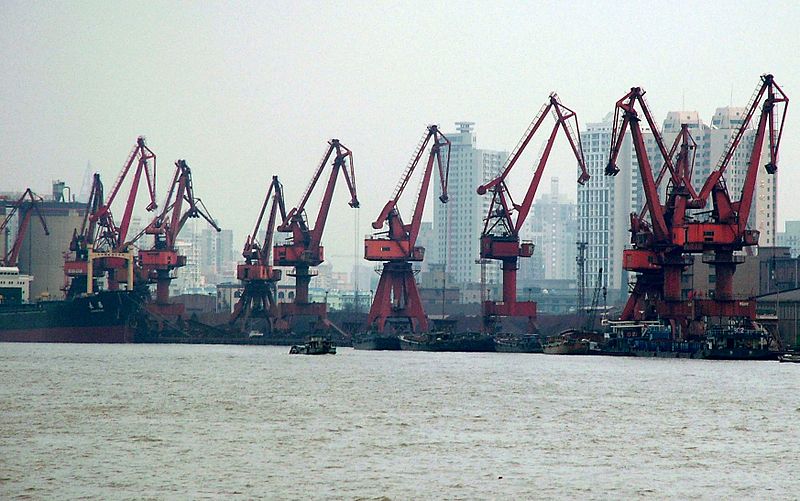
Port of Shanghai
You should know the exact port where your freight forwarder will load the cargo.
As a rule of thumb, go for a port that will cost less.
When you use such ports, you will incur additional shipping costs from China to Lithuania.
Also, the distance between the departure and the destination port is a factor determining the cost.
The distance between the two ports is directly proportional to the shipping charges.
Obviously, longer sea routes will cost more.
The difference simply comes as a result of the logistics incurred like the fuel etc.
§ Weight or Dimensions of the Cargo
The cost will also depend on the weight / measure of the good you’re shipping.
This means that 1 cubic meter is equivalent to 1000 kg.
If anything varies from the standard measure, you’ll incur additional costs.
An example is where the shipment is 3 cubic meters and 3500 kg.
In such a case, the weight is considered bigger and hence the shipping rate for the sea depends on that.
§ Importing from Inland
When importing from a supplier far from any port, one has to incur the road transport charges to the departure port.
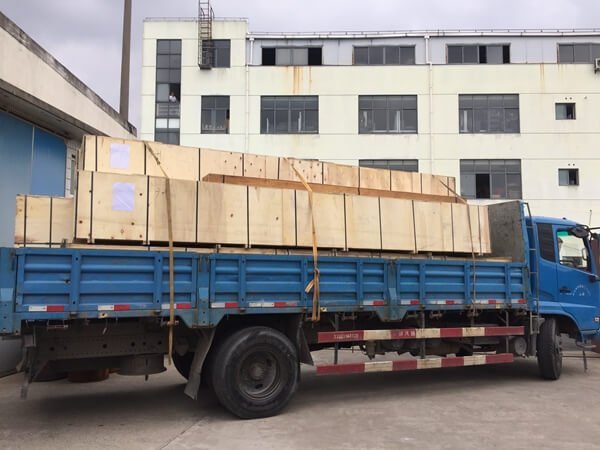
This factor has to be considered when sourcing for a commodity to be imported.
It is important to have the supplier located near the main port to avoid such extra costs.
§ Shipping Fluctuation Rates for Full Container Loads
From time to time, container shipping changes fluctuate.
So, it is important to factor in the fluctuations when budgeting.
A freight forwarding company such as Tj China Freight can give the probable estimation of the fluctuation to avoid underestimation which may end up in delays.
These fluctuating rates are simply fixed by all the shipping lines so that they can stop the falling sea freight rates.
These rates are normally artificially increased using the large general rate increases (GRIs).
§ Cost of Air and Sea Freight
Before deciding on the method of shipment to Lithuania, the weight is an important parameter to consider.
Normally, sea freight is 4 to 6 times cheaper than air freight though very slow as it takes longer.
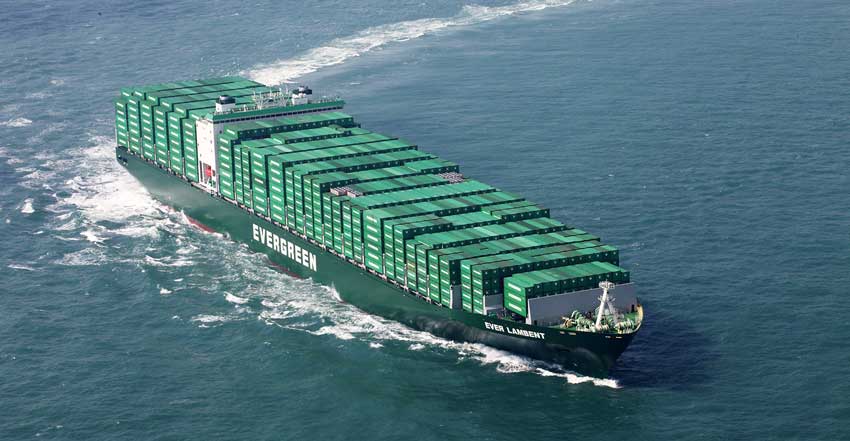
Evergreen cargo ship
It is more cost-effective to use a courier to ship weights less than 100kg than other modes.
When loads more than 100kg are to be shipped, sea or air flight will be cost-effective.
In sea freight, more weight translates to high shipping cost.
Big cargo via air freight will attract high charges to a tune of 4 to 6 times.
§ Deferment
This is a cost that is normally charged when the shipping company pays VAT and Lithuania duty on behalf of the importer before billing it.
In some cases, deferment may be charged as a percentage, which may be high and add to the final importation cost.
These are costs which the importer can easily avoid.
§ Marine Insurance
To protect your goods in transit, it can be important to get insurance cover.
This cover takes care of the damages or losses during the transit period.
The insurance cost will cover the value of the goods, but not the weight or volume.
The cost increases with the value of the commodities.
Hence, more valuable goods will attract high insurance charges.
§ Lithuania Duties and Taxes
Lithuania import duties and taxes will obviously affect the cost of your imports.
As a matter of fact:
Every importer has to pay all the Lithuania Duty + VAT unless his/her goods are eligible for duty relief scheme.
Once your goods reach Lithuania, they will be cleared via customs.
Charges of the invoice together with Lithuania Duty + VAT will be paid at the port of destination.
Obviously, this is before the goods are finally released.
The shipping costs keep varying depending on the seasons.
Chapter 3: Shipping Time When Shipping from China to Lithuania
It takes good time to ship from China to Lithuania owing to some logistics which have to take place.
Be it a huge cargo, or a small parcel – it has to undergo some processes or procedures.
And, therefore, so many factors come into play when shipping from China to Lithuania
Apart from the shipping time, you need to factor in customs clearance, delivery, loading and offloading the cargo.
Chapter 4: Ways of Shipping from China to Lithuania
Several factors come into play before one decides on which mode to use when shipping from China to Lithuania.
The goods can either be shipped via air or sea.
It will all depend on the nature of the goods.
Of course, the urgency of the commodity will determine the mode of shipping.
The perishable goods requiring very short duration can use air transportation while those that require long duration can use sea transportation.
Tj China Freight prides herself with on time delivery of the goods both at the port and at the inland destination.
This means that Tj China Freight will ensure that the customer receives the goods at a convenient place.
4.1. Courier from China to Lithuania
The courier services are known to give bulk service on every process involved in the importation. They will provide door to door services.
The importer will only enter into an agreement with the Courier Company and they shall ensure that the good is delivered to the importer’s door step.
Most trusted courier companies for Lithuania to China shipments may include DHL, FedEx, UPS and TNT.
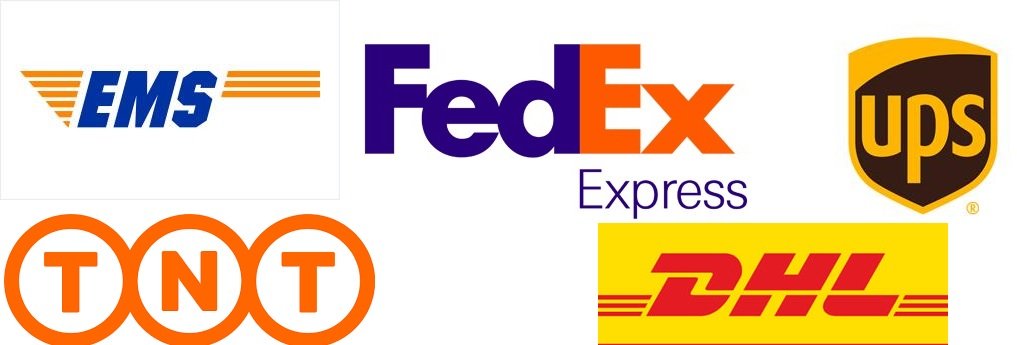
Courier shipping from China to Lithuania
4.2. Sea Freight Shipping from China to Lithuania
China is about 6266 km away from Lithuania but traversing this distance may take longer owing to the sea routes defined by water bodies.
Sea freight is determined by the location of ports to be used and the nature of consignment to be transported.
Very bulky consignment is normally shipped via sea.
Although it takes time to reach the final destination, it has proven to be the cheapest ever.
Before choosing this shipment method, he/she must be well acquainted with different ports both in China and Lithuania.
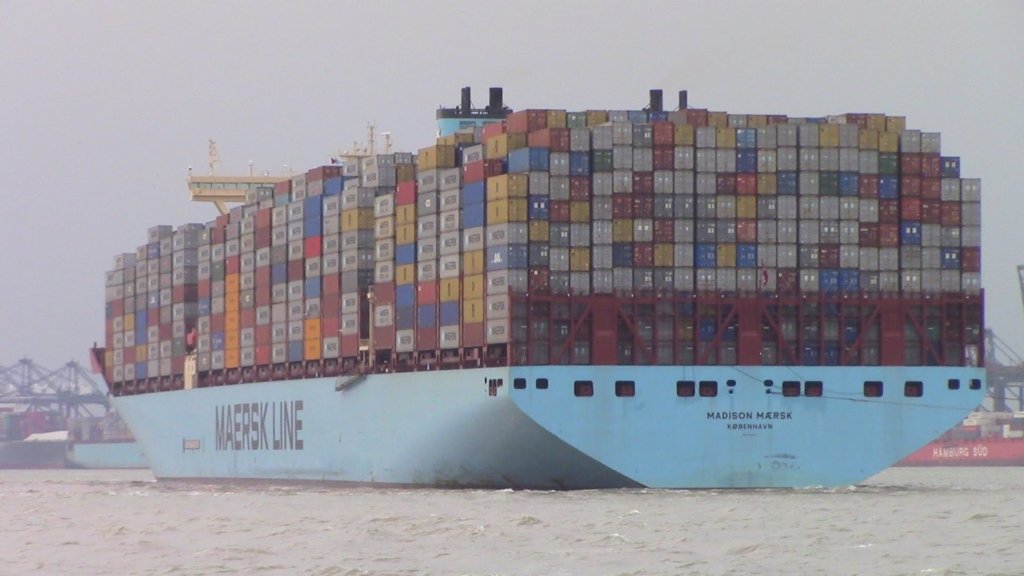
4.3. Air Freight from China to Lithuania
The fastest way to ensure the cargo reaches Lithuania from China is via air freight.
Although it is the fastest, it is also restricted by a number of factors.
Some huge consignments cannot be carried via air and hence has to undergo sea transportation.
One may wonder why many prefer air freight to sea freight.
The reasons are so many, but the most common one is the shortest delivery time.
Also, the air freight agencies use shortest routes to the destination airport.
It depends on the urgency of the cargo.
A factor of cost-effectiveness also comes into play due to the minimal point of contact.
That is, one freight broker easily handles all the logistics which saves time and money.
Also, the consignment is insured for risk reduction and tracking and hence its safety is highly guaranteed.
Chapter 5: Modes of Shipping from China to Lithuania
Whenever you’re importing from China to Lithuania, you can choose many modes of shipping.
The mode of shipping will depend on:
i. Cost of shipping
ii. Type and nature of goods
iii. Space available, i.e. volumetric shape is key in ocean freight
iv. Whether you’re going for ocean freight or air freight
So, which options should you consider?
We have:
- Roll-on/ Roll-off shipping
- Reefer Container Shipping
- Full Container Load (FCL) Shipping
- Less than Container Load (LCL) Shipping
- Out of Gauge (OOG) Shipping.
· Less than Container Load (LCL) Shipping from China to Lithuania
This type of container consignment carries different types of goods of different origin and importers.
The goods are normally cleared and handled independently.
The container is put into the vessel once it is full.
This means that all the goods packed in the same container will be consolidated up to the point when the container is cost-effective for shipping.
Important to note is that all the consolidated goods must be heading to the same port of destination.
To come up with the shipping cost, the individual space (cubic meters) taken by every good will determine how much one will pay.
This is the cheapest sea/ocean shipping mode when one is considering importing small quantities of commodities.

LCL Shipping
Even though this mode shipping is cheap, it always takes longer time due to prolonged consolidation and handling time.
Consolidation is done both at the departure and destination port plus independent clearance of every package.
Due to availability of different packages in one container, one has to ensure he does good packaging to avoid the damages during transit.
Goods which are chemical in nature have to be declared before transit for precaution to be made to avoid any further damages.
Every package is marked for easy identification at the destination port.
· Full Container Load (FCL) Shipping from China to Lithuania
This is used where one has too much goods which is almost or full of a container.
The container is treated as a single entity and all handling and clearance is done singly.
This saves a lot of time compared to the LCL and also it is safe as it can be easily tracked.
During tracking after the ship departs, the booking number or the shipping container is used to track the duration shipment can take in the sea/ocean.
Charges on the FCL are flat rate compared to those of LCL where the charges are levied on each and every individual package.
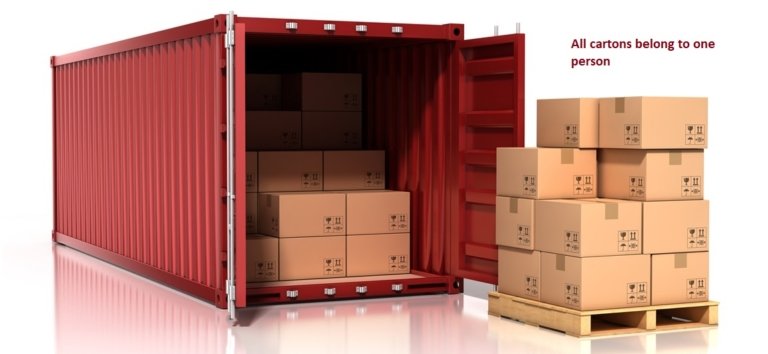
FCL Shipping
There are three commonly used container types during shipping:
- 20 feet
- 40 feet
- 40 feet high cube container
Each container should hold a load of 28 tones.
There is always a difference on how LCL and FLC are handled both at the port of departure and at the port of destination. It is due to the ownership inside the containers.
§ Handing LCL vs. FCL
The following are what makes LCL and FCL vary in the way they are being handled;
Handling of the FCL takes minimal time compared to the LCL.
It is because the supplier takes the responsibility of loading, sealing and transporting to the port of departure.
There is always no need of opening the consignment at the departure port till it reaches the destination port where the importer clears and collects it.
For the sake of LCL, a lot of time is utilized during handling since every package has to be treated independently.
This is during consolidation at the port of departure and at the port of destination during segregation for individual packages for clearance.
The Freight forwarder issues bill of lading directly in the case of FCL while in LCL, the bill of lading is given by the official shipping line.
FCL charges less than LCL owing to its low handling activities.
The difference in charges come as a result of handling the LCL both at the destination and departure ports during consolidation and segregation.
Many LCLs in one single container attracts high workloads which automatically pushes the cost high.
During unloading of the LCLs at the port of destination, segregation will be time consuming.
While for FLC, the consignment will just be unloaded from the vessel and sent to the owner.
FCL has one single container number which can easily be tracked.
On the other hand, in LCL, every package has independent shipping mark to help differentiate it from other packages.
When putting marks on the individual LCL packages, care has to be taken to ensure that the marks are visible with bold black color and are waterproof to resist being erased easily.
Basically the writings are supposed to be in English and possibly in the language of the destination port.
For cargos containing dangerous chemicals/substances, orange or red colors are used to mark them.
Chapter 6: FAQs about Shipping from China to Lithuania
I know probably, you may have some questions about shipping from China to Lithuania
Here, I’m going to cover common questions importers from Lithuania ask whenever they want to ship from China.
You can go through these seven questions, and in case you have any concerns, don’t hesitate to ask.
Question 1: Which port should I use to ship from China to Lithuania?
Answer: There are so many ports in China and I have highlighted most of them in this guide.
However, as a rule of thumb, use one that is closer to your supplier.
You need to discuss this with your freight forwarder.
Because you need a port that can link you directly to Lithuania
This way, you will save both time and money.
Question 2: What is the total time taken to ship from China to Lithuania?
Answer: Normally, the transit time will vary greatly owing to a number of factors.
You can determine the timeframe depending on the transit period and other logistics procedures.
For instance:
- Paperwork and handling consignment may take two weeks
- Shipping may vary between a few hours to several days depending on the mode of shipping
- Sourcing product from the supplier may take a few days or months
In short, you can factor in all these to get all the approximate time it will take to ship from China to Lithuania
Question 3: What do we mean by “Beat My Freight Quote” when importing?
Answer: Beat My Freight Quote is when you deal directly with a professional freight forwarder with good knowledge in your area.
All inquiries will be dealt with by the local agent who will make a search of the best deal on your behalf.
So, all the deals will be between the agent and yourself.
In Beat My Freight Quote, no commission is taken for any transaction made and you can save a lot.
In order to be a licensed Beat My Freight Quote Freight, the freight forwarder must either be a member of a national freight forwarding company association.
Also, the freight forwarder must portray a high level of professionalism.
Question 4: How do I make payment to a freight forwarding company based in China?
Answer: One can use money transfer systems to pay to that company’s bank account in China.
Most of these freight forwarding companies will have accounts with leading banks such as HSBC (Hong Kong and Shanghai Banking Corporation).
The freight forwarder can conveniently and swiftly receive any payment.
Question 5: I don’t have a Bill of Lading (B/L), what should I do?
Answer: You can declare the cargo booking reference number in place of the “Bill of Lading (B/L) number” in your permit application.
That is, if you haven’t been given the Bill of Lading.
You can update the information once you get the Bill of Lading by simply submitting the amended application.
Question 6: How do I guarantee the safety of my imports from China?
Answer: Hiring a professional and experienced freight forwarder is the only solution here.
Why?
They will handle all procedures, be it loading, labeling, transportation or clearance.
Such freight forwarders know the rules and regulations governing importing from China into Lithuania
In fact, hiring a professional freight forwarder will save you both money and time.
Question 7: How can I track his shipping order?
Answer: The moment your order leaves the warehouse, the freight forwarder will send you the dispatch notification having the tracking information from the carrier.
This will include the carrier website link which one can always use to know the distance status of the consignment.
Anyway, that’s all I had for you in this section.
Conclusion
Clearly, importing from China to Lithuania is simple and straightforward.
All you should do is to understand everything I have highlighted in this guide.
From evaluating costs, knowing rules and regulations, choosing modes of transport, etc.
And more importantly, hire a professional freight forwarder.









